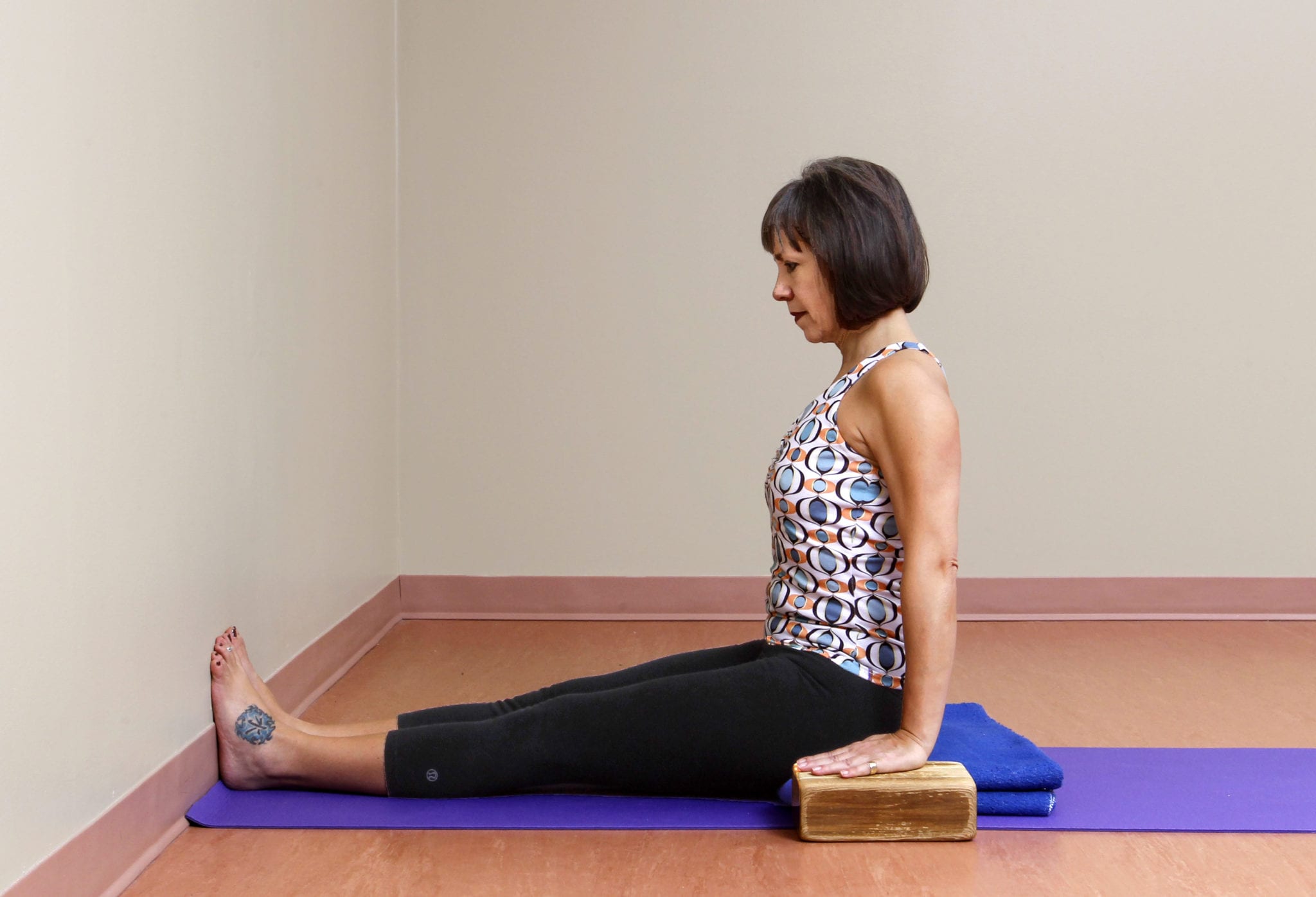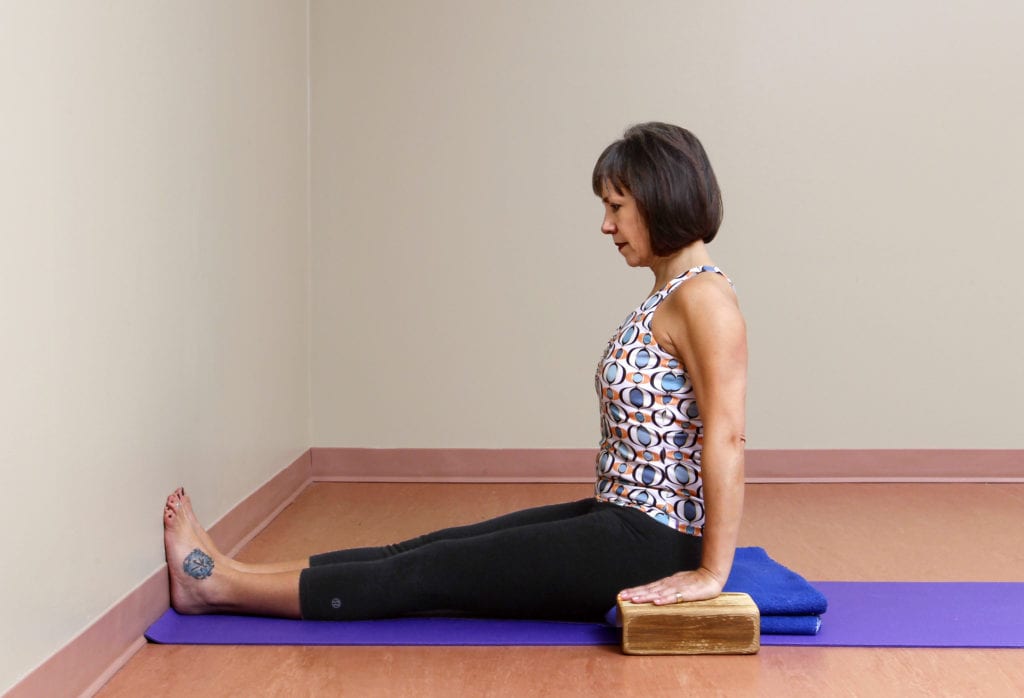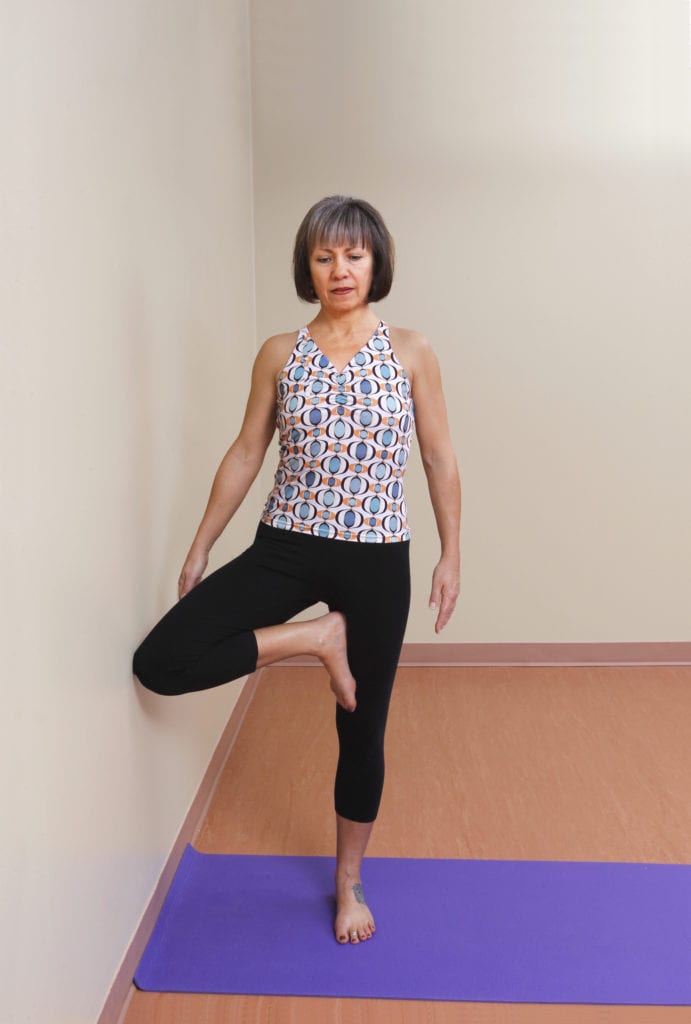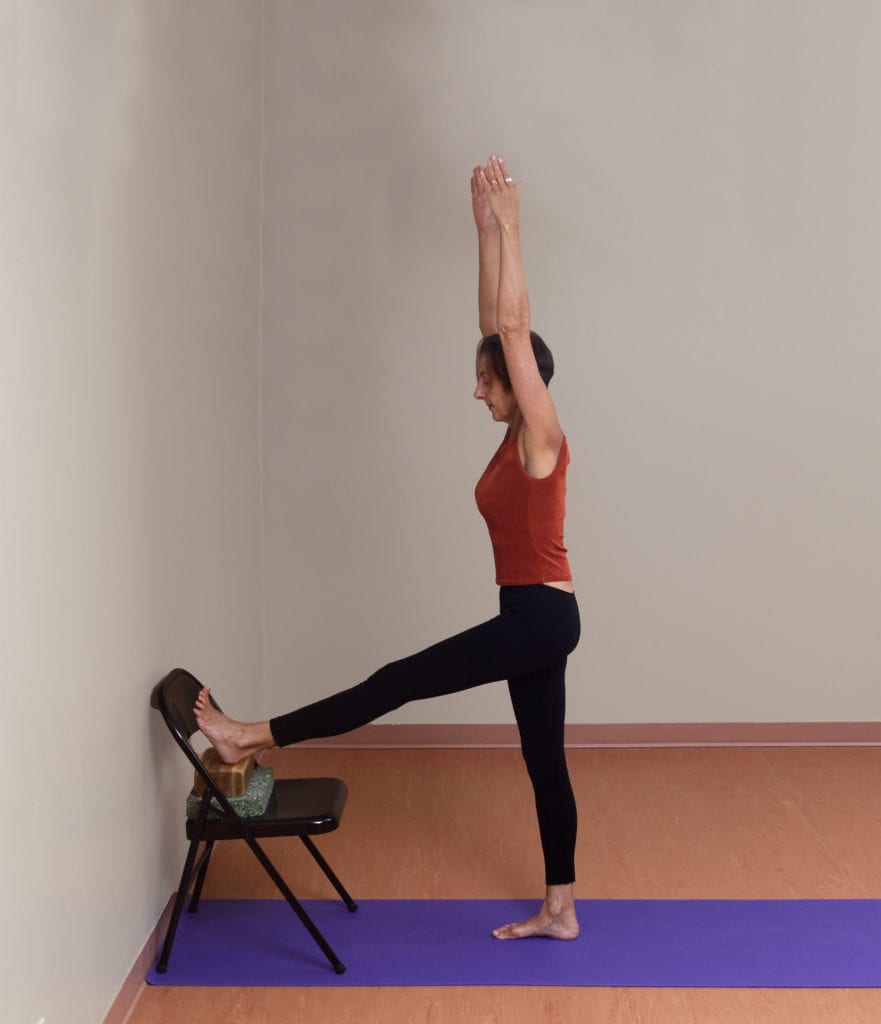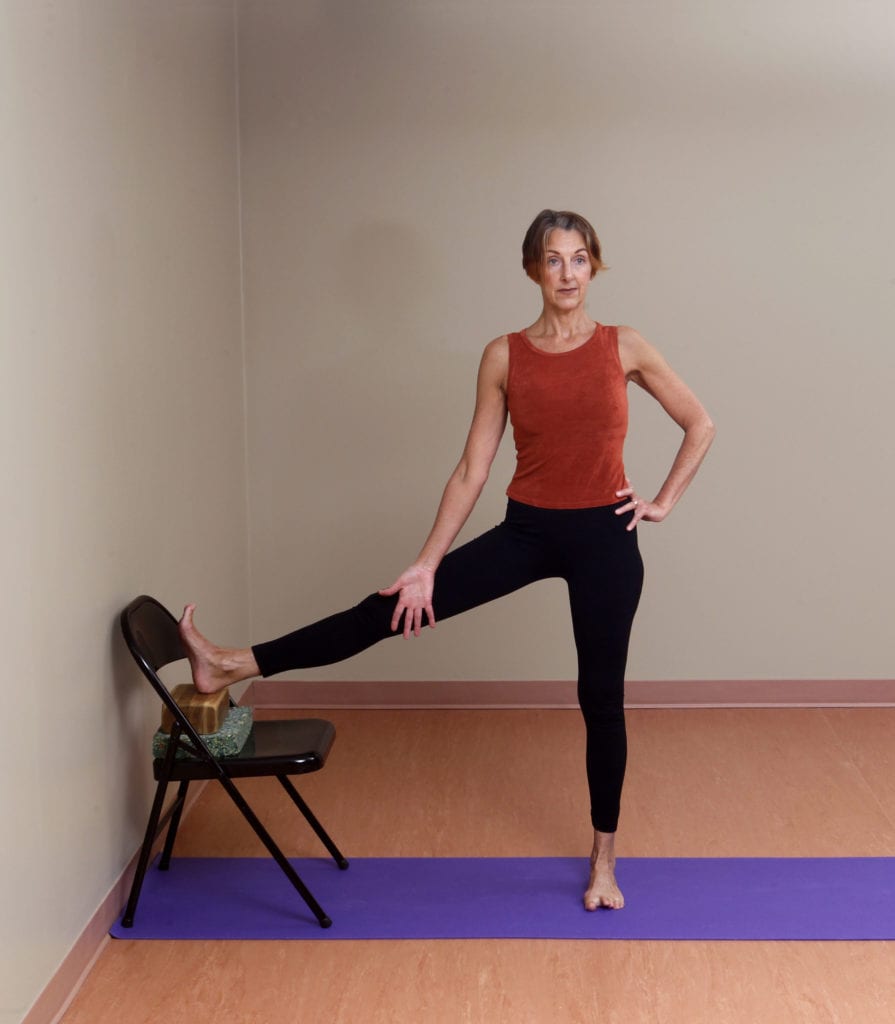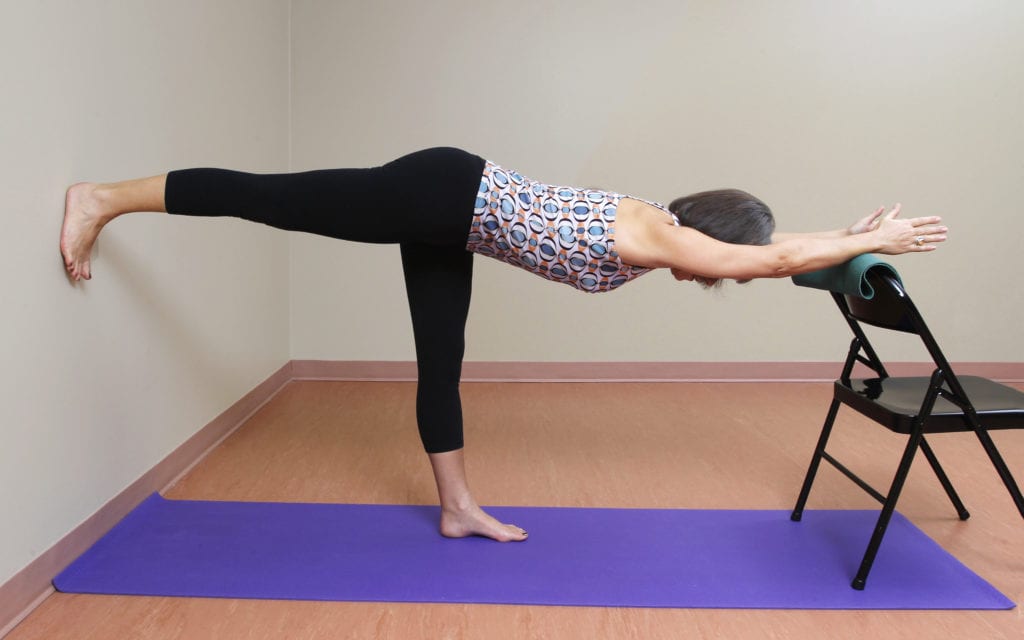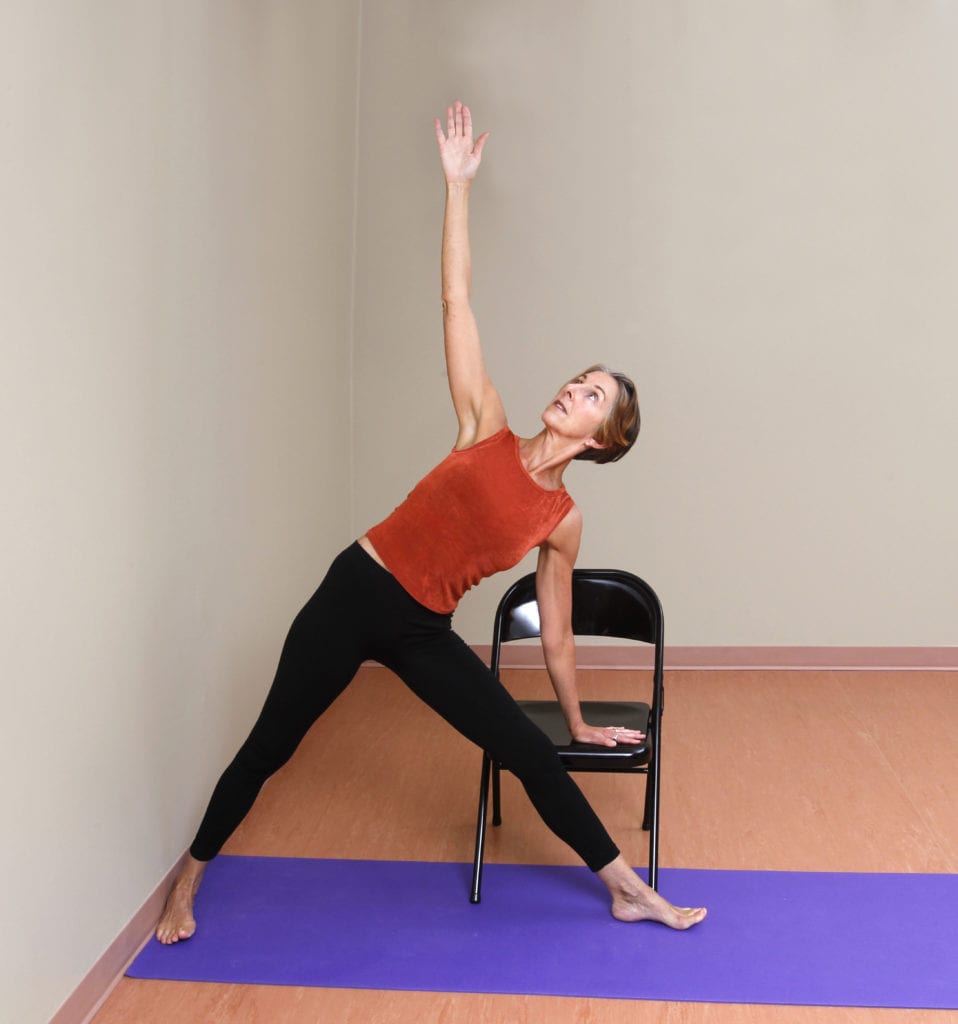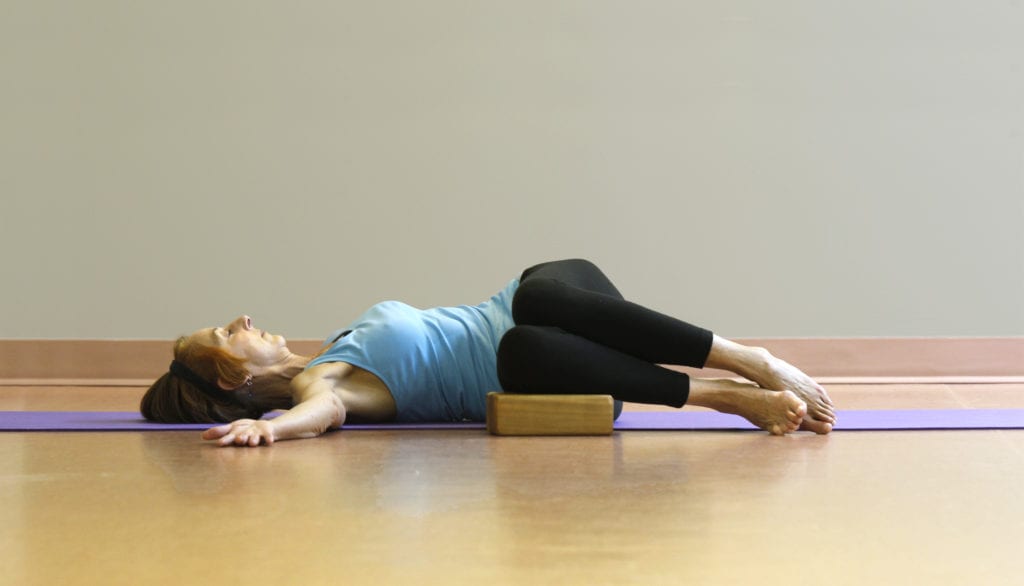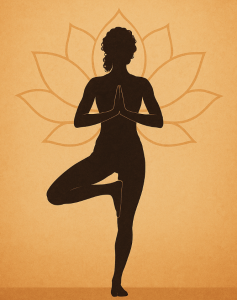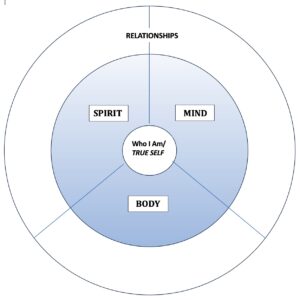What happens to the mind also happens to the body and spirit. Donna Raskin
As yoga teachers and writers, we all came to the practice of yoga for its holistic approach of uniting mind, body and spirit. For us, the wonder of yoga really emerged as we discovered that our physical discomforts (i.e., tight hips, aching lower back, etc.) have their root cause in emotional blockages. Yoga, through felt experience, teaches each of us where we hold emotional tension in our bodies. When we suppress emotional burdens instead of expressing and psychologically healing them, they get stored in our physical “junk drawers.”
Unresolved emotion has to go somewhere, and in many people’s case it ends up in their hips. The hip joints and pelvis, as our centre of gravity, are vital for healthy alignment, balance and posture. In addition, our nervous system sends survival signals to this area when we are in crisis. These signals stimulate a strong contraction or flexion in the body, which is what brings us into the fetal position. Have you ever curled up into a ball when you were sad or afraid? Instinct and physiological reactions combined with our emotional makeup are responsible for whether we fight or flee when distressed. This link between our instinctual and conditioned reflexes and our hips is an explanation for why we find suppressed emotion stored there.
Constant stress or trauma (i.e., war, abuse, extreme sports) can be responsible for activating our fight-flight reflex as a 24/7 response. When this ‘switch’ is turned on and continually remains on, the overstimulation causes our autonomic nervous system to reset our internal homeostasis. Now, more energy is used to maintain this elevated tension and thus redirected from maintaining and healing the various systems of the body — circulatory, digestive, reproductive, etc. Over time and under such duress, illness and injury set in.
Repressed traumas caused by overwhelming emotion can be stored in a body part, thereafter affecting
our ability to feel that part or even move it. Candace Pert, 1999
Fortunately, tightness and numbness are strong signals from our body that we need to do something different in order to improve our health. The yoga actions and hip-opening sequence below will help to get you started in that direction. Be aware, as you work to create greater opening in your tight hips, you may notice emotions arising within you. Just allow these emotions to rise up and pass through you. Another experience to watch for is the impact on your breath. Tightness and tension in our physical body shows up as holding our breath or rapid, short breathing. Try to keep your inhalations and exhalations long and even. You might even try breathing into those tight areas in your body to create more space. As T. K. V. Desikachar teaches us, “The quality of our breath expresses our inner feelings.”
Action: From the centre of your side hips, relax and release the skin and muscles in two directions — forward toward your front hip bones and back toward the sides of your sacrum. For more advanced practitioners, relax and release the iliacus muscles — line the inside of our hip bones — in the same two directions.
DANDASANA (Stick pose)
Sit with your legs straight and your feet into the wall. Use supports under your sits bones and hands as needed. Find the action. Hold the pose for 10 to 15 breaths.
VRKSASANA (Tree pose)
Stand sideways to the wall. Bend your right knee and place your right foot into your inner left leg (thigh or calf). Keep your front hip bones even and pointing forward (your right knee will be forward of your hip). Find the action. Hold the pose for 10 to 15 breaths, step down and repeat on the other side.
UTTHITA HASTA PADANGUSTHASANA I (Standing Big Toe pose I)
Stand facing a chair with supports for your heel. Bend your left knee, place your heel onto the supports and straighten both legs. Keep your hips parallel to the floor. Find the action. Hold the pose for 5 to 10 breaths, step down and repeat on the other side.
UTTHITA HASTA PADANGUSTHASANA II (Standing Big Toe pose II)
Stand with your right side facing the chair. Bend your right knee, place your heel onto the support and straighten both legs. Keep your hips parallel to the floor. Find the action. Hold the pose for 5 to 10 breaths, step down and repeat on the other side.
VIRABHADRASANA III (Warrior pose III)
Stand a leg’s length away from the wall facing your chair. Bend your right knee and place your foot fully into the wall behind you. Fold forward reaching your hands or wrists onto the chair. Straighten both legs. Find the action. Hold the pose for 5 to 10 breaths, step down and repeat on the other side.
UTTHITA TRIKONASANA (Triangle pose)
Place your right outer heel at the wall and turn your toes in slightly. Step your left foot your own leg’s length distance away. Turn your left leg out until your knee points directly forward. Exhale, side bend and place your left hand onto support (chair or block). Hold the pose for 5 to 10 breaths, then repeat on the other side.
ARDHA JATHARA PARIVARTANASANA (Half Stomach Twisting pose)
Lie on your back — knees bent, feet on the floor and arms in a “T” formation. Lift your knees toward your chest and release them to your left. Use support under your knees to allow your shoulders to rest onto the floor comfortably. Hold the pose for 15 to 20 breaths, bring the knees back up and repeat on the other side.
 Winnipeggers Helen Maupin (www.righttojoy.com) and Candace Propp (www.natureofcontentment.com) are certified senior yoga teachers and authors of the Creating Space: Yoga Actions book series. To purchase these print or ebooks, visit here. For yoga teacher training (200- & 500-hour) with them and Stacy Schroder or to purchase the Yoga Actions teacher training facilitator manuals and student handbooks contact www.sereneyogastudio.com.
Winnipeggers Helen Maupin (www.righttojoy.com) and Candace Propp (www.natureofcontentment.com) are certified senior yoga teachers and authors of the Creating Space: Yoga Actions book series. To purchase these print or ebooks, visit here. For yoga teacher training (200- & 500-hour) with them and Stacy Schroder or to purchase the Yoga Actions teacher training facilitator manuals and student handbooks contact www.sereneyogastudio.com.
Photos by Wayne Glowacki.

